These Are Apartment Therapy's Design Changemakers for 2024
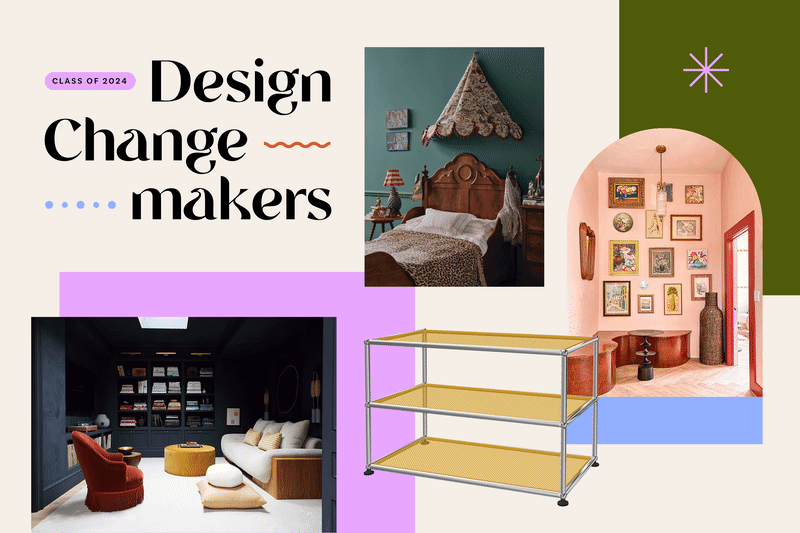
Every year, the Apartment Therapy editorial team sets out to identify a class of Design Changemakers — the rising stars, disruptors, and risk takers in the design world shaping the way design looks today and leading the charge for the future.
This year we’re kicking off our Changemakers by showcasing nine dreamers and doers who are making their mark on their industries, from decor and architecture to curation and content creation. And this is just the beginning: We’ll be tapping the members of our Design Changemakers Class of 2024 in the months to come to continue the conversation around design all year long.
Get to know our nine Changemakers for 2024 below:
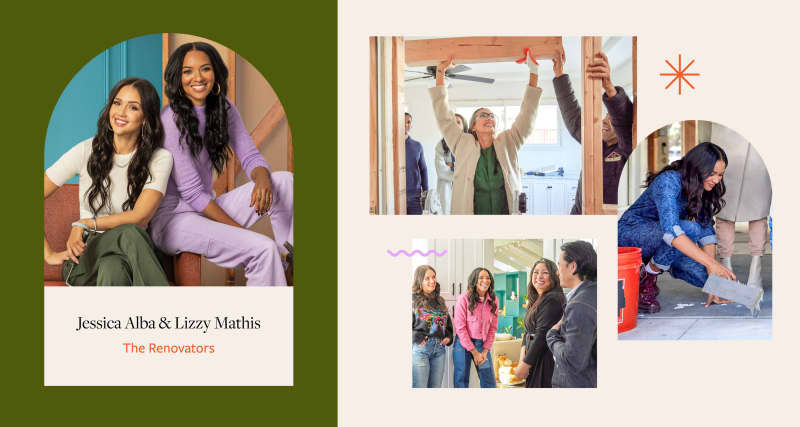
Jessica Alba and Lizzy Mathis of Honest Renovations, The Renovators
Jessica Alba and Lizzy Mathis certainly weren’t new to the world of television when the first episode of their family home reno show, Honest Renovations, aired on Roku in August 2023. The show, which the streamer renewed for a second season, is kind of like Extreme Makeover: Home Edition meets The Home Edit. Alba and Mathis surprise overwhelmed parents with a renovation that aims to declutter and make homes more functional for families. “Maximizing storage to be aesthetically beautiful is really kind of our thing,” says Alba, who, like Mathis, is a mom of three.
The women know the intensity of parenting a busy household well. Both relocated often throughout their childhoods, and each credited their own moms with influencing their design senses at a young age. “We moved around a lot and … she knew how to make a house a home,” Mathis, founder of TheCoolMom.Co, says.
Alba, an actor and the founder of consumer goods brand The Honest Company, spent much of her early childhood growing up on “cookie-cutter” Air Force bases throughout the United States, although they were never lacking in charm. “My mother always had a very glamorous aesthetic,” she says, and “wasn’t afraid” to stand out.
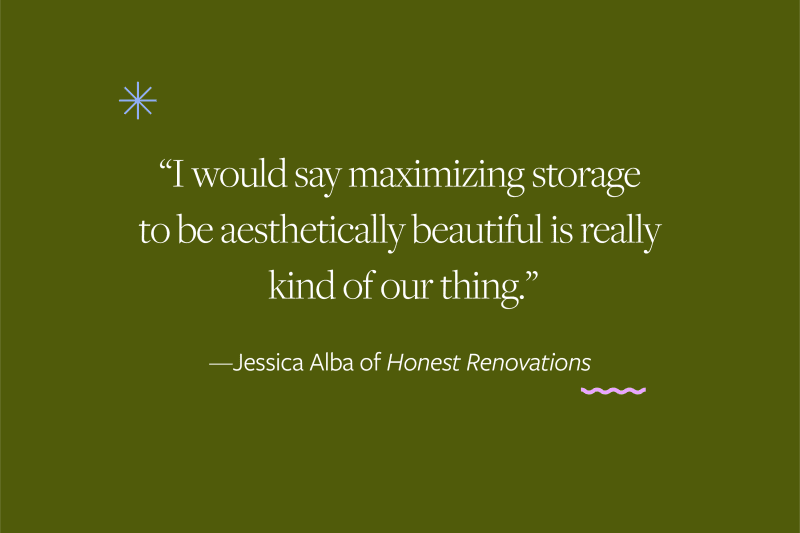
So while the idea for Honest Renovations very much came about during the pandemic — when the two friends decided to team up to showcase their passion for design and helping others — it was also inspired by their moms, too.
Mathis says her mom’s ability to always “make a house a home,” no matter where they were, is what they aim to give the families they work with. Alba’s mom’s attention to detail (she says she always “took those steps to really make it feel elegant and [have] a vibe that was different than what everyone else says”) has carried over into her work, too. “The beauty of what Honest Renovations gives families is knowledge of how to operate in a home with multiple kids and a busy lifestyle and needing space no matter what size home you have,” Mathis says.

And in Season 1, they’ve nailed it. “The homes we were able to transform were truly remarkable,” Mathis says, adding that between the two of them, their ability to create aesthetically pleasing, functional homes has made a “really big impact in the lives of the families that we were able to design for.”
Season 2, they tease, promises even more of that.
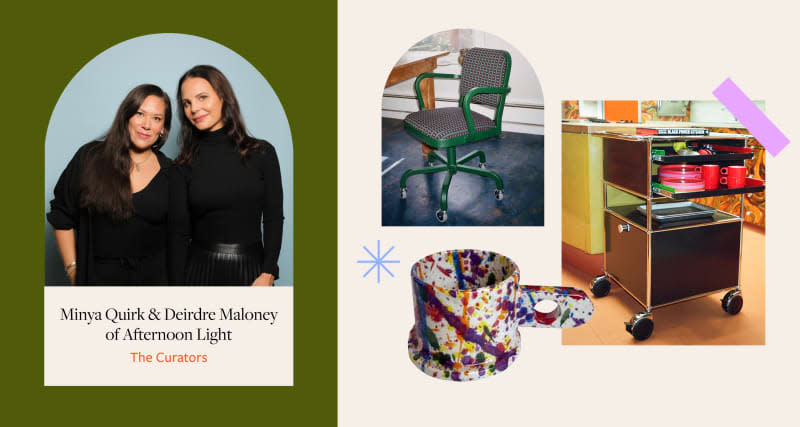
Deirdre Maloney and Minya Quirk of Afternoon Light, The Curators
Friends and business partners Deirdre Maloney and Minya Quirk met at a fashion show in 2003, and they’ve been on the same wavelength ever since — especially when it comes to helping design brands and makers get more attention. In 2004, they founded a PR and event production agency, BPMW, which focused on menswear. They parlayed that expertise into building the blueprint for two revolutionary trade shows: Capsule in 2007 for men’s fashion, and Shoppe Object in 2018, their first foray into home decor. “We love to survey an industry and connect dots, gather brands in community, [and] curate a collection of creators and creations that we think are great,” says Quirk.
The natural next step or phase in this line of work? Actual retail. “When we launched Shoppe Object, we quickly noticed the lack of multi-label online stores for the home, which was very unlike our experience in fashion,” says Maloney, who cites Net-a-Porter, SSENSE, and Shopbop as inspiration. Identifying this gap was just half of the equation, though; when the COVID-19 pandemic forced the pair to pivot to an at-home version of Shoppe Object, they realized they now had the know-how to build a digital shopping platform.
After time spent conceptualizing and identifying brands to stock, Afternoon Light, an online marketplace specializing in unique and stylish home furnishings, was born.
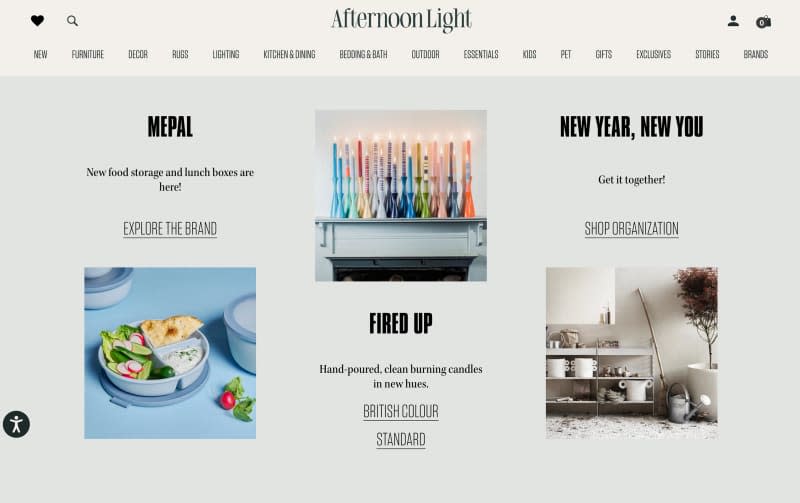
From the start, Afternoon Light wasn’t your average e-commerce platform. Its goal is to champion up-and-coming brands and introduce customers to a highly curated, but well-rounded, assortment of items. Indie makers share “storefront” space with more established brands, and the site offers exclusives from selected partners, too. You can shop for a sofa alongside, say, a quirky plunger for your toilet.
“We’re trying to tone down the overwrought tendencies and seriousness of the high design world and make shopping for great stuff more fun,” says Quirk. And unlike Pinterest or Instagram, you don’t have to worry about winding up down a rabbit hole with nothing to show for it but dead links, Maloney says. Everything on Afternoon Light is just a click (and shipment) away.
Afternoon Light doesn’t skimp on service, either — its “Stories” section contains a wealth of trend-, item-, and personality-driven pieces that pull the curtain back on many aspects of design, including product styling. Across the site, you’ll find pieces that resonate with many different interior styles, too.
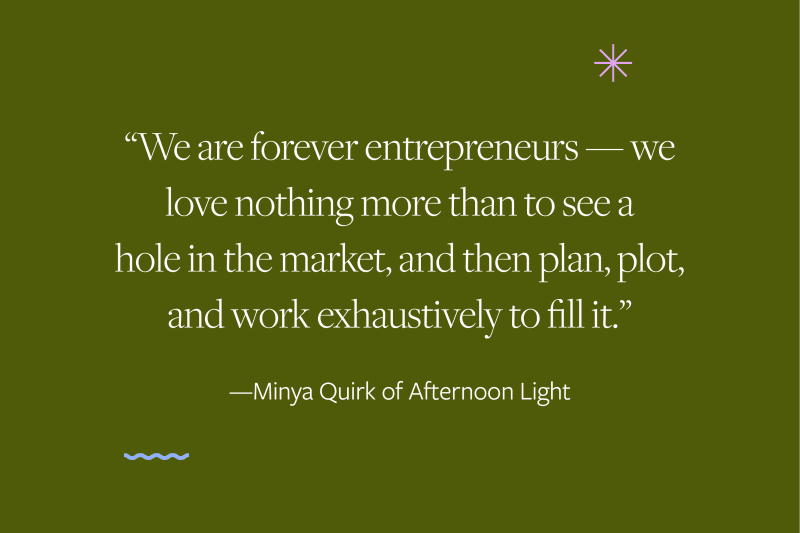
For 2024, Maloney and Quirk are focusing on building out their trade program for design pros. They’re also teaming up with CRTFD, a plant medicine and fashion brand, to launch a pop-up retail, dining, and event space in the West Adams neighborhood of Los Angeles. One thing that isn’t going to change, though, is their commitment to finding what Quirk calls “the good stuff” and serving it up to those looking to decorate and furnish.
“We’d like to drive momentum and energy in the home space; breathe a little more fun and disruption into things, amplify new or less frequently highlighted voices, drum up excitement and connect brands with people,” says Quirk. “Homes should be sacred and expressive spaces — we love that they’re as individual and varied as their inhabitants.”
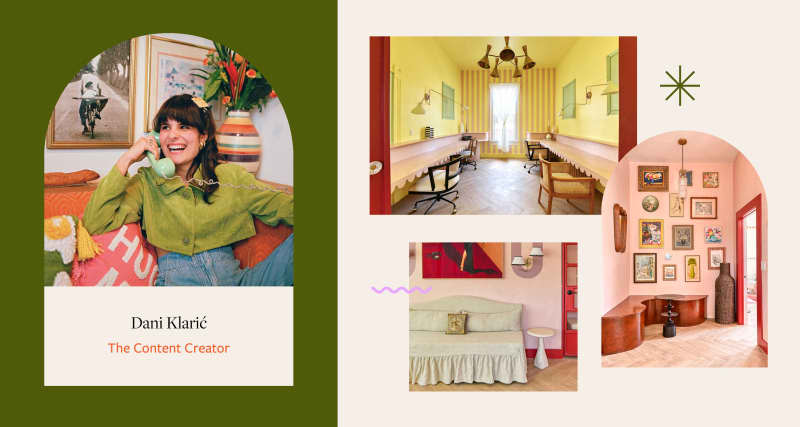
Dani Klarić, The Content Creator
Dani Klarić didn’t follow a traditional path to the design world, but that’s on brand for this content creator turned interior decorator. With over two million followers on TikTok, her own vintage clothing store, and decorating projects around the globe, she’s proving interior design doesn’t exist in a vacuum, and that color can work in any kind of space — even neutral ones.
Instead of attending design school, Klarić began her career in the film industry, where she gravitated toward set design. She was simultaneously decorating her Miami apartment and posting about it on social media, which caught her friend (and now-boyfriend) Marcello (Bello) Peschiera’s attention. He was opening Bellow’s Film Lab, a storefront for camera rentals and developing old-school film, and asked Klarić to decorate the space.
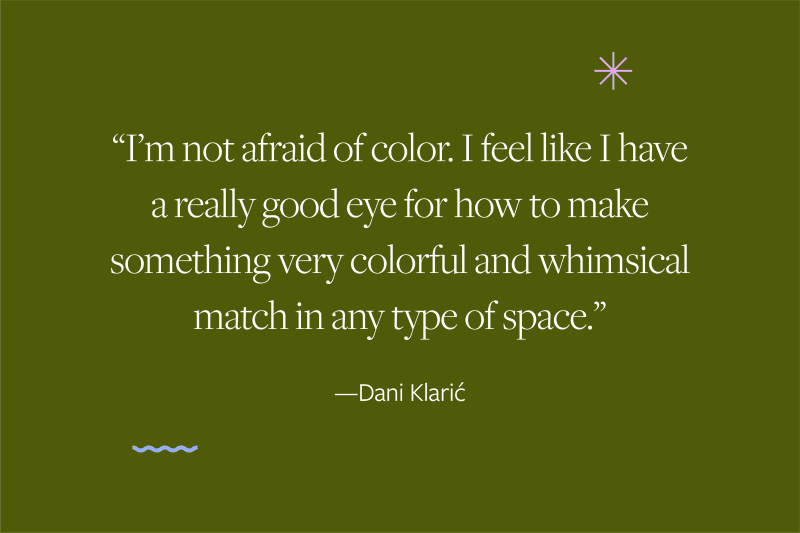
“I was like, I’ve never done that before,” Klarić remembers. “But I used to do set design, and I decorated my apartment, so how hard can it be?”
Turns out, people well beyond Klarić’s inner circle really connected with her style, which focuses on upcycling (she’s a pro at finding vintage gems) and bright colors inspired by a mishmash of artist David Hockney’s work and her own Mexican heritage. Soon after decorating Bellow’s store, she got her first official client through social media.
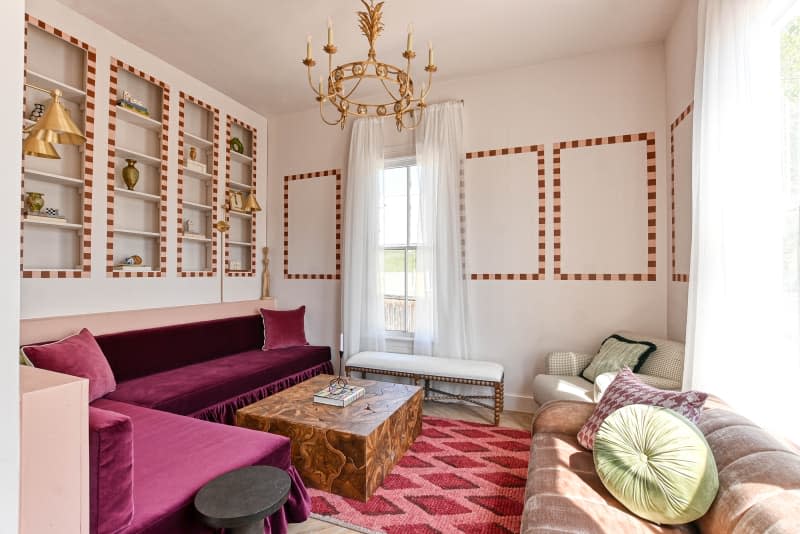
Since then, it’s been a whirlwind of design project after design project, much of which she faithfully documents on her social accounts. Klarić has decorated both residential and commercial spaces (her favorite project of 2023 was designing an office for a real estate group in Texas) and even created a custom collection of colorful home goods with Yaya & Co. (another line is dropping soon).
Even with all of the work Klarić’s completed, this is just the beginning. Euphoria Collective, the new design firm she opened with friend Lainie Sanders, has an upcoming residential project in Kuwait that’ll likely be brimming with her signature vintage finds and vibrant hues. Eco-friendly practices, like sourcing furniture and decor locally, choosing handmade items, and shopping secondhand, are also important to the designer. “We have a holistic design approach that includes the incorporation of biophilic and net zero design principles,” Klarić says.
Alongside a focus on sustainability, Klarić is definitely on a mission to color the world with her bright-colored business — and everything she touches. “I feel like the color is disappearing, and it makes me sad,” she says. “I feel like I have a really good eye for how to make something very colorful and whimsical match in any type of space.”
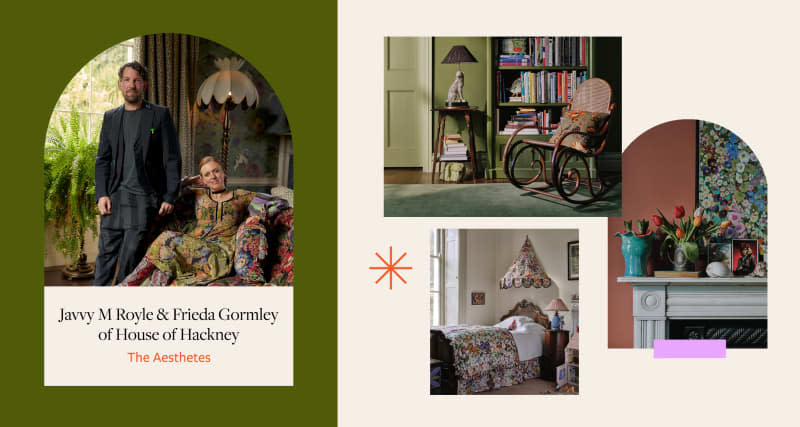
Frieda Gormley and Javvy M Royle of House of Hackney, The Aesthetes
When husband-and-wife duo Frieda Gormley and Javvy M Royle decorated their first townhouse in London’s Hackney borough, they had one main goal: to bring nature inside. Both craved the vibrant, natural-looking colors and prints of their 1980s childhoods but couldn’t find anything to match that vision amidst the then-all-white-everywhere design trends. So the couple took matters into their own hands and founded a new home line, House of Hackney, in 2011 (both without interiors backgrounds, to boot!).
After initially launching with just recyclable wallpaper, the British brand is now known for an assortment of maximalist, heirloom-worthy fabrics, cushions, lighting, furniture, and more. Almost everything is decked out in whimsical, William Morris-esque prints with, of course, naturalistic motifs. “From the start, nature has been our design muse,” says Gormley. “Everything we create is inspired by nature’s aesthetics.”
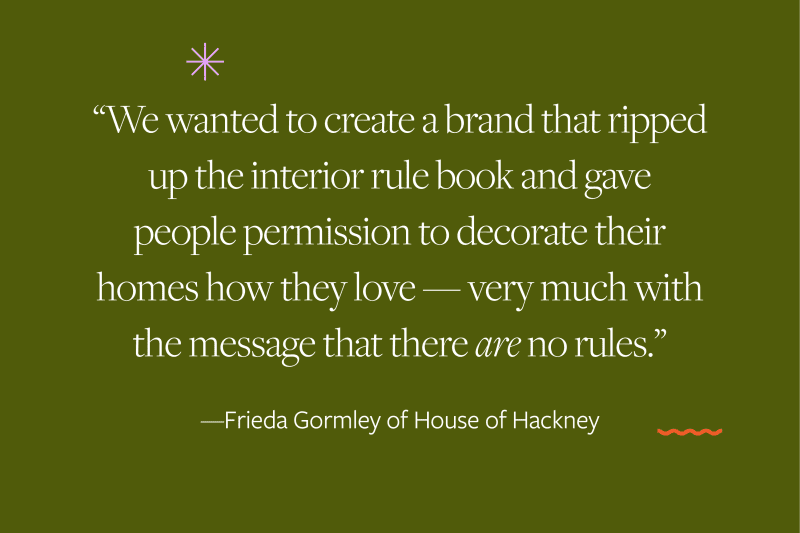
That nature-loving ethos is evident not only in their signature moody floral patterns, but also the company’s eco-conscious, leave-the-planet-better-than-you-found-it business model. Operating with B Corp and carbon-neutral certifications, House of Hackney prioritizes positive environmental impact over profit, while the founders also diligently assess the overall footprint of each small-batch, low-waste collection they produce.
“Our product needs to honor nature in terms of how it’s made, where the fibers are coming from, what its end of life is like,” says Gormley. “We’re now holding ourselves to account for working with scientists to find new substitutes for materials that the industry should no longer [be] using.”
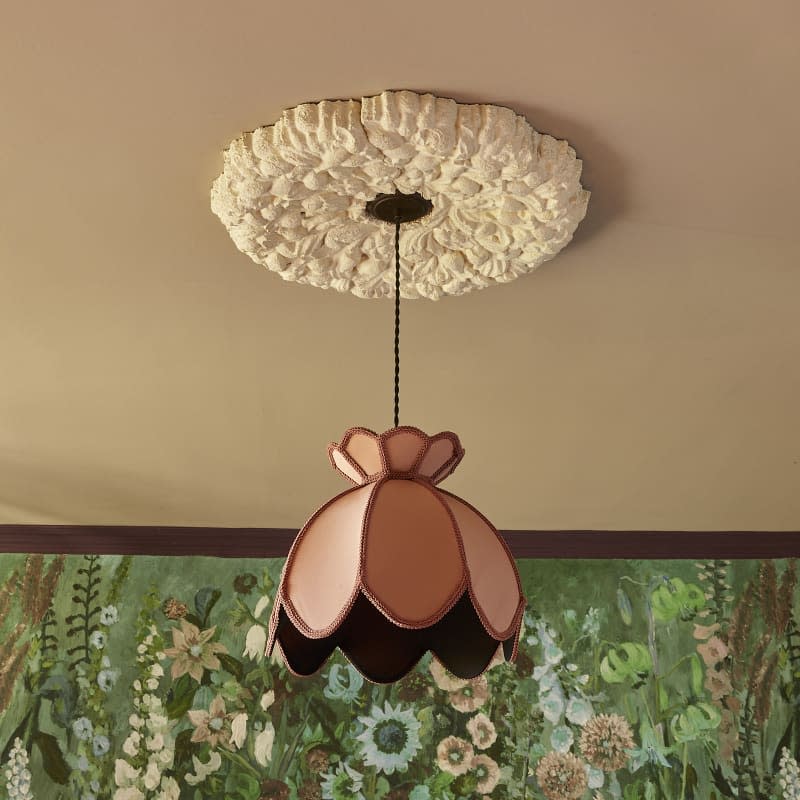
Case in point? This past holiday season, House of Hackney debuted Christmas decorations and ceiling medallions made from mycelium — a biodegradable natural mushroom material — in lieu of plastic, and a new cork wallpaper collection is currently in the works as a more sustainable alternative to paper. They’re also one of the first companies to appoint “Mother Nature” and “Future Generations” as board members (yep, you read that correctly), working with the organization Lawyers for Nature to denote an external representative who will legally act as voices for both forces.
“The world didn’t need another interiors brand, so we need to do good stuff with our platform and show new ways of doing business,” adds Gormley.
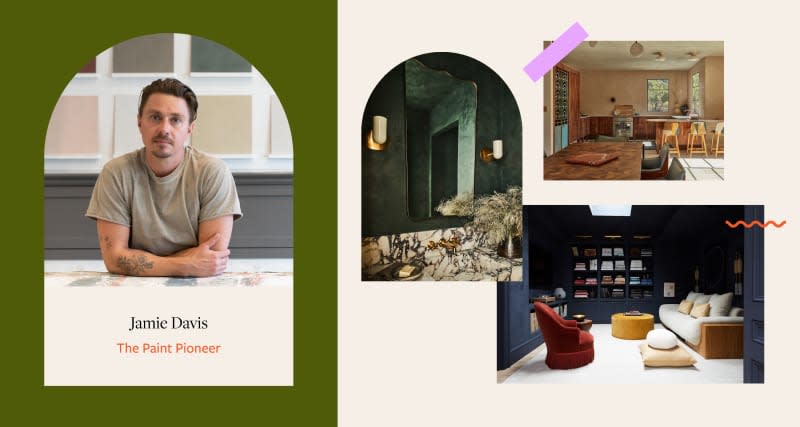
Jamie Davis of Portola Paints, The Paint Pioneer
They say you shouldn’t judge a book by its cover, but if a home is the book and paint is the cover, then it’s hard not to judge. The right paint really makes all the difference, and that’s something that Jamie Davis, who co-founded Portola Paints alongside his brother, Casey, knows extremely well.
Davis describes his company as “a mom-and-pop shop through and through.” The siblings, who grew up pursuing photography, painting, and architecture, received mentorship from their father, a high-end custom home builder. It was their father’s work on a 1998 project with old-world finishes that led to researching and eventually importing lime wash paints, which eventually inspired the trio of men to determine how to make their own offerings in the United States.
Most major paint companies are known for their offerings of what Portola refers to as traditional paints (think: your standard eggshell, glossy, or flat finishes), but the Davises make paint for people looking to bring some old-world character into their home. Their Roman clay paint, with its plaster finish, will add an organic, textural look to any room, while the lime wash paint is artfully weathered and brings in an instant patina effect.
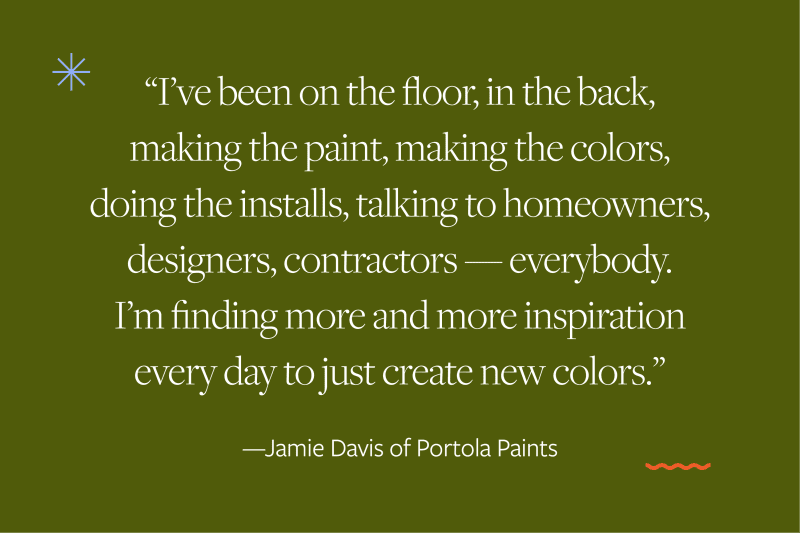
Portola, whose products are made locally in Los Angeles, recently celebrated its 25th anniversary with collections selected by top designers Brigette Romanek, Jake Arnold, Amber Lewis, Nickey Kehoe, and Leanne Ford. Despite the big-name collaborations, Davis hasn’t been afraid to get his hands dirty (literally) along the way.
“I’ve been on the floor, in the back, making the paint, making the colors, doing the installs, talking to homeowners, designers, contractors — everybody,” he says, reflecting on his time with the company. “I’m finding more and more inspiration every day to just create new colors.”
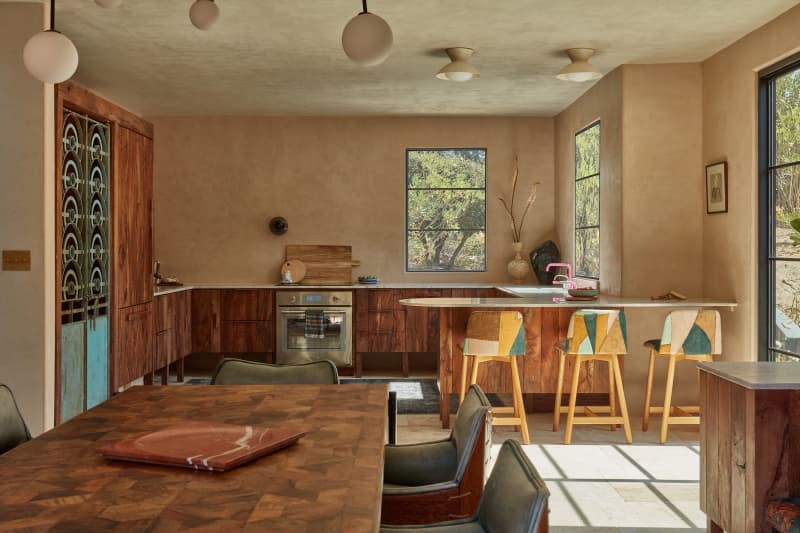
Davis, a father of two, says that his own home is drenched in neutrals, with plenty of Portola’s Roman clay plaster on the walls, and serves as a “calm, mellow sort of environment” in which to unwind from the day.
He’s thrilled that Portola will soon open a new showroom in North Hollywood. “It’s really exciting to have our forever home that my dad has been building out with us, and it’s been such an incredible project,” Davis shares.
“To be in the position to do what we’re doing to this building speaks volumes to what we’ve been able to accomplish over the last 20 years,” he says.

Veronica Valencia-Hughes of Revealed, The Interior Design Powerhouse
You might know Veronica Valencia-Hughes from her show Revealed, an HGTV home renovation show, but you might not know that for much of her career, she’s actually been behind the camera.
“It’s interesting because right now I have two career paths,” she says. “I have my design side, which you guys get to see on Revealed, so I’m an interior designer — a creative director of my brand and my studio — but I’m also an executive producer and a designer behind the scenes and run major design shows.” Those major shows span HGTV, Netflix, ABC, NBC, Fox, CNBC, and OWN and include Extreme Makeover: Home Edition (where she got her start at age 21), Home Town, Rock the Block, and more.
A few of her favorite TV moments as of late? There’s Revealed, of course, in which she learned to be comfortable being her authentic self (and learned to be OK with mistakes) as the lead in front of the camera — and the fact that Revealed aired in Latin America on February 6 as Nuestra Casa, Nuestra Historia, “which is Our Home, Our Story … and I love the name,” she says.
There’s also the HGTV Barbie Dreamhouse Challenge show she led the design on. “I had to work with HGTV, Mission Control Media (the production company who hired me), and also Mattel,” she says. “The whole thing was insane. And I didn’t realize how much I love pink!” Then there’s her guest judging on Rock the Block, airing March 5, and season 3 of Home Town Takeover, which will take place in Florida.
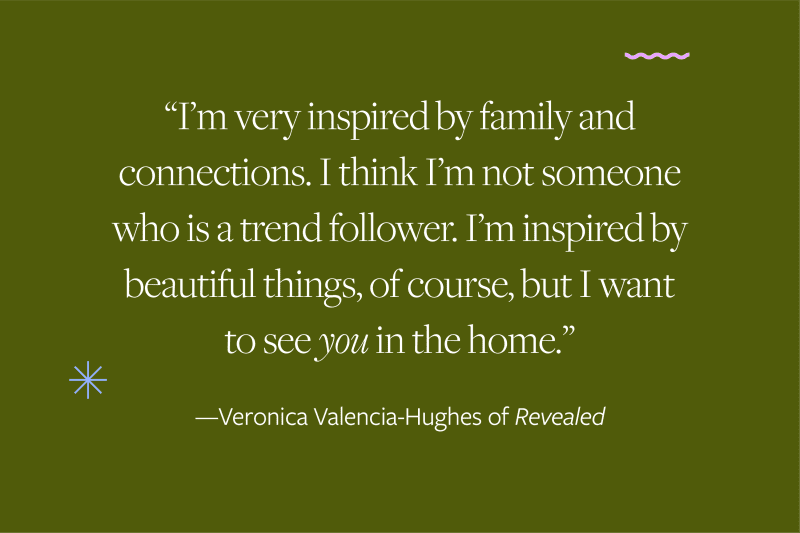
Valencia-Hughes calls herself “a chameleon,” in that one of her design superpowers is that you can’t really see a personal style or brand in the projects she designs. “It’s someone else living in the house, and I want it to reflect them,” she says. Not only that, but she’s a chameleon because she can switch from being the main personality of a show to taking the helm behind the scenes.
“I go into shows, and I can come in, and I know exactly what to do … I understand those big-scale projects,” she says. “So I’m like two people, essentially. Splitting my time into both is interesting.”
One of her signatures is the questionnaires she sends homeowners, a practice she learned from working as a lead designer for shows she wasn’t the face of. (Questions might include the following: What’s your favorite book? What’s your favorite flower? Where do you go shopping for clothing? What do you do on a Saturday morning — are you meditating, reading the paper?) “I really dive into the lifestyle a lot, and I doubt there’s another designer sending out, like, a 100-page Q&A,” she says.
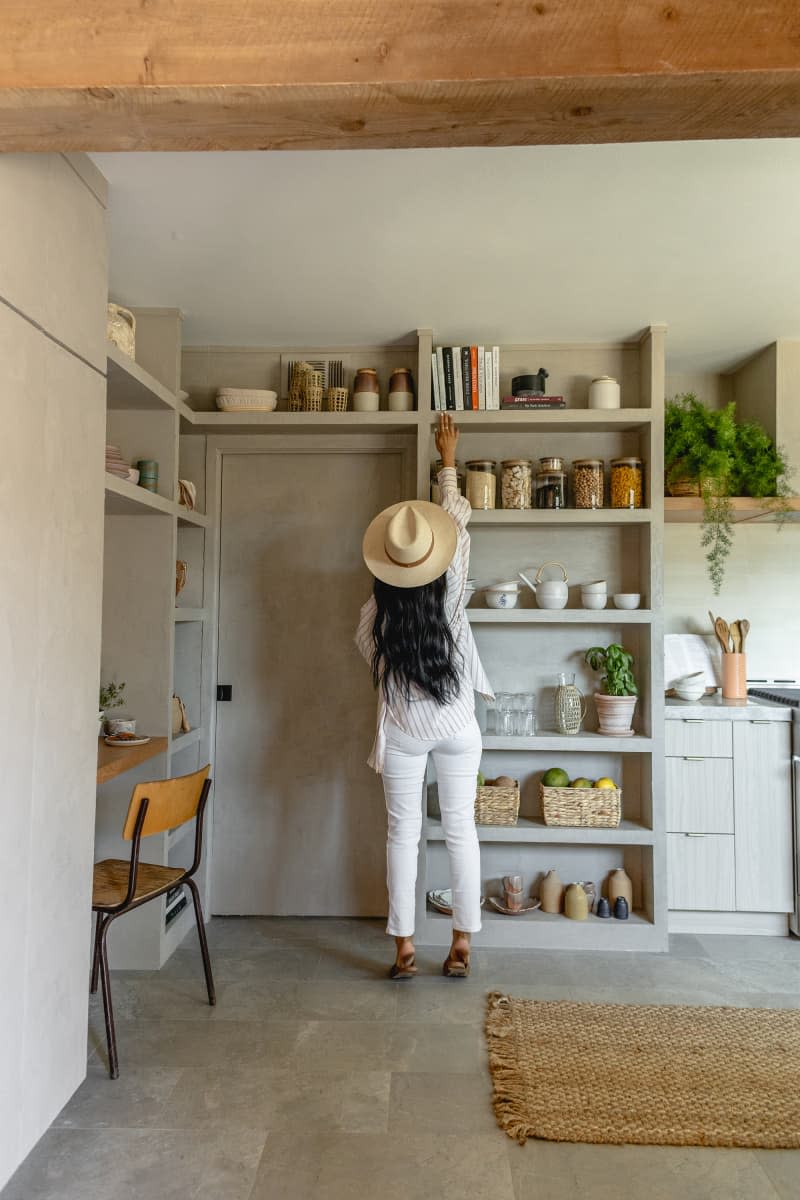
“Maybe it’s because I’ve come from television, because I was a ghost designer,” she says. Prior to Revealed, “a majority of the homes that I’ve designed, I’ve never even met the people.”
Even today, that attention to detail comes through in little heirloom touches on Revealed, such as a family’s dinnerware set adorned with custom illustrations from the kiddos and a media cabinet meets display case full of family mementos. “I’m very inspired by family and connections,” Valencia-Hughes says. “I think I’m not someone who is a trend follower. I’m inspired by beautiful things, of course, but I want to see you in the home.”
So it shouldn’t be a surprise Valencia-Hughes describes her style as heartfelt, warm, and romantic. “I can’t leave your coffee table without a candle lit and setting the moment,” she says. “I’m all about creating moments and memories in your home.”
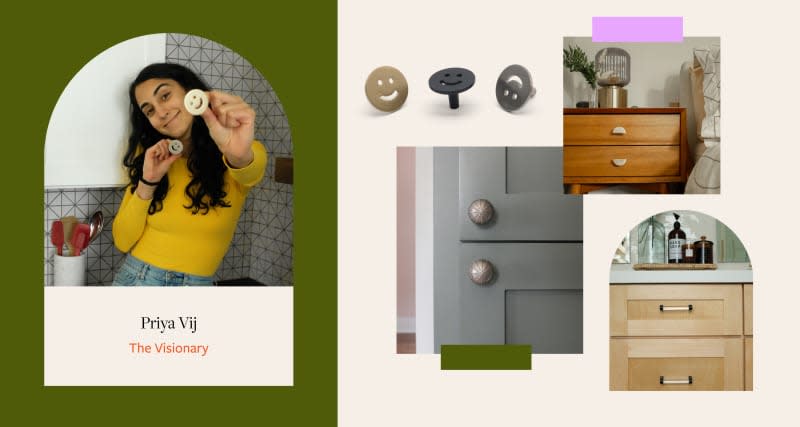
Priya Vij of Hapny Home, The Visionary
Cabinet hardware might not seem like an important part of home decor, but Priya Vij certainly thinks it is — and with good reason. Growing up with a father in the cabinet hardware business for 40 years taught her early on how a seemingly simple detail like knobs can elevate the look of a room or an entire home.
Vij never thought she’d be in the business herself, but that changed in 2019, when she decided to start Hapny Home, her very own cabinet hardware company. “I’ve spent a lot of time investing in my space, getting products in my space that I feel really good about, that are reflective of my personality and just kind of upgrading whatever I can. And hardware is one of the easiest ways to do that. I obviously had a connection with my dad [so] I was thinking about hardware, but I felt that there wasn’t really anything in the market that was speaking to me.” The rest, as they say, is history.
Hapny is named for the cities that Vij has lived in that have inspired her designs — Houston, Austin, Portland, and New York. She also cites her own Indian heritage and her favorite art pieces as inspiration, but mostly, she says, she has a fascination with shapes and how they intersect.
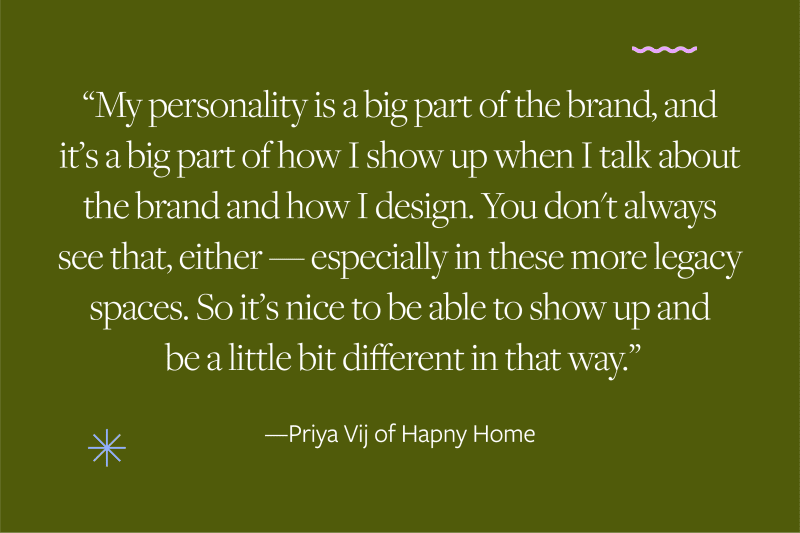
“I think hardware at the end of the day is really just a bunch of shapes with stems and screws on it if you think about it in its simplest form,” she explains. The store’s products are available online and in brick-and-mortar stores across the U.S. and Canada. Knobs range from $15 to $25, while pulls range from $20 to $50.
When it comes to Hapny, Vij dreamed of bridging the gap between mass-market industry titans, expensive custom pieces, and retailers who don’t necessarily specialize in hardware, and she’s certainly achieved that. Take pieces like the Horizon Cabinet Knob and Sunburst Cabinet Knob, for example. They have a classic utilitarian design, which belies the fun and creativity they bring to a simple knob — without breaking the bank. Vij also works with a manufacturer who has been in the industry for generations, ensuring that quality is at the root of all her pieces. This means her pieces will last a long time.
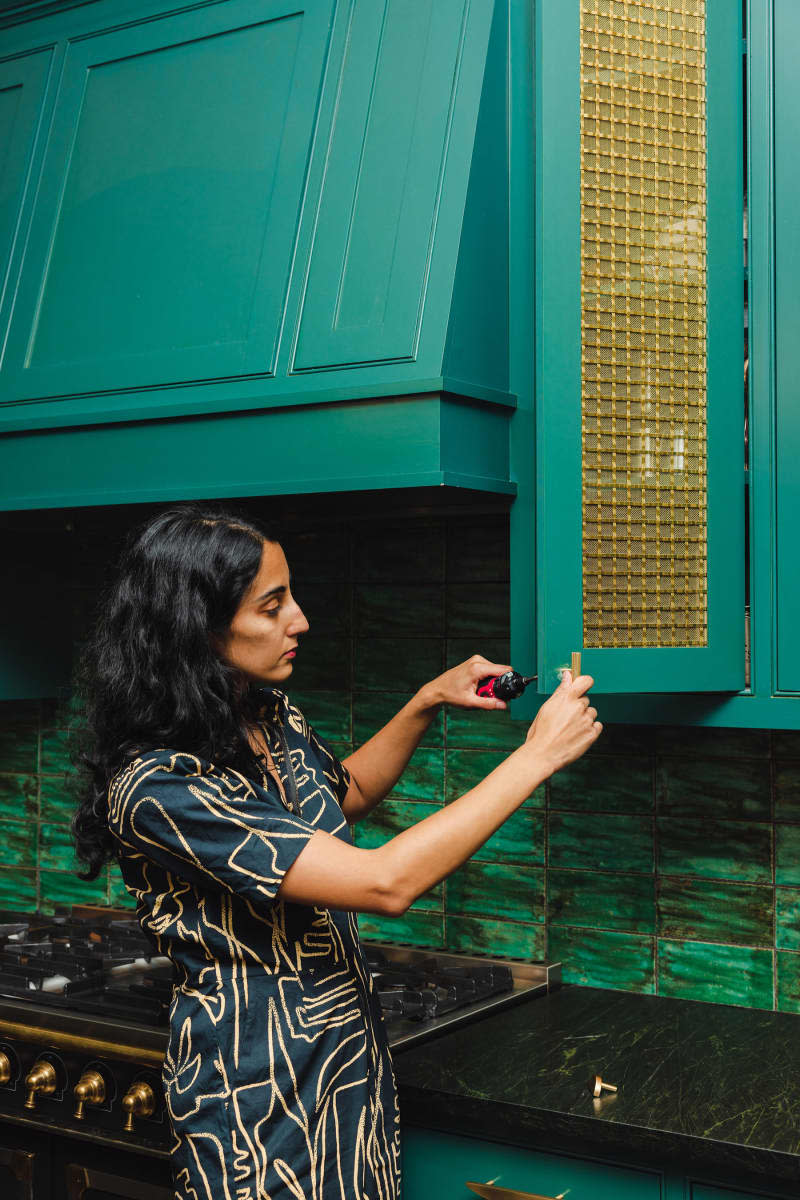
But her favorite piece is the smiley knob, a design that she thought up when she wanted to make something that was high-quality but still silly and cute. It echoes her sentiment on her field in general — to bring joy to the hardware space.
“I’m just very high-energy and silly and I talk with my hands. My personality is a big part of the brand, and it’s a big part of how I show up when I talk about the brand and how I design. So I think you don’t always see that, either — especially in these more legacy spaces. So it’s nice to be able to show up and be a little bit different in that way.”
It’s no mistake that her company name also sounds like the word “happy.” Making design approachable is one of her goals, and her smiley knob is just one of many ways she hopes to achieve it. As she says, ”It’s just a little smiley face to remind you that things can be made really well and you can spend a lot of time and energy [on them], but [they] also can just be exciting and fun!”
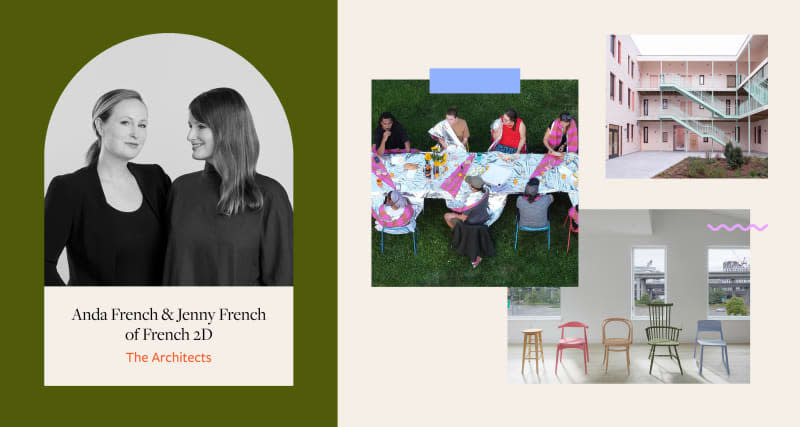
Anda and Jenny French of French 2D, The Architects
A lot of people might immediately say “no” to going into business with family, but for sisters and founders of the Boston-based architecture studio French 2D, Anda and Jenny French, there’s genuinely nothing better.
The French sisters are four years apart and have been “making things together” for their entire lives, so when they realized they could pair their similar backgrounds, skills, and interests, it didn’t just feel like an “aha” moment — it was also an ingenious business idea.
French 2D is an all-in-one architecture, design, and academic collaboration that puts family, familiarity, and the future at its core. Together, Anda (a visiting faculty member at the Princeton School of Architecture) and Jenny (an assistant professor in Practice of Architecture at the Harvard University Graduate School of Design) design everything from cohousing projects to civic installations with an “interest in coziness, comfort, empathy, people, and the way that they interact,” according to Anda.
In a rapidly changing world, one overarching question guides their work: “How can we continue envisioning less conditioned and less isolated spaces for living?”
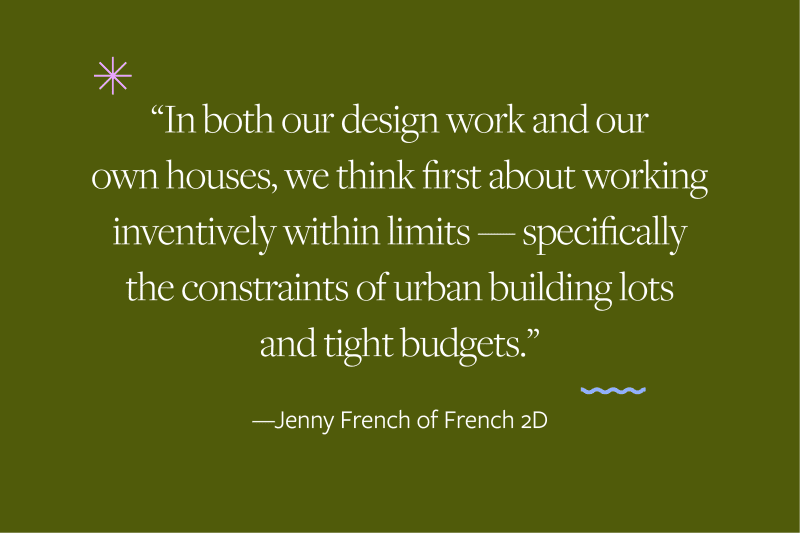
Their most recently completed project holds one answer to that (as does their work — they prefer working at each other’s kitchen tables to working in an office). Bay State Cohousing, a multifamily complex just outside of Boston, took six years to complete and consists of 30 units spanning 45,000 square feet. The cohousing community relied on the collaboration of 30 different households, several workshops, and the “unlikely cooperation” of so many people — from neighbors and residents to city officials and construction teams — to design “collective spaces” for togetherness as well as individual ones. Jenny says seeing the project go from an idea to “fully realized” has been nothing short of “incredibly rewarding.”
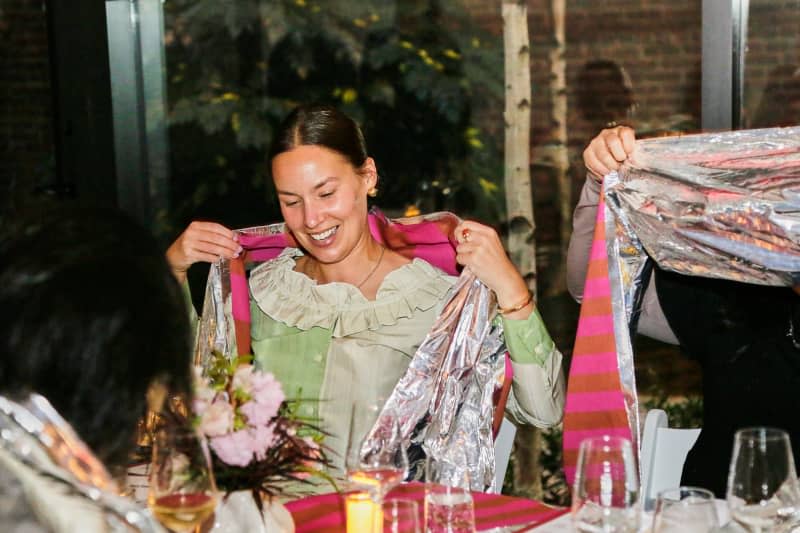
In their work, the two “like mixing the super pragmatic practice with experimentation and out-there thinking,” Jenny says, which can make them feel like “outliers” in both the academic and design worlds.
But both sisters agree that the immediate future means an opportunity to create “new comfort,” with a focus on “coziness, comfort, and empathy” that addresses overarching concerns like “climate anxiety and resource scarcity” and how all of those things factor into the ways people actually live together. Their timing couldn’t be better.
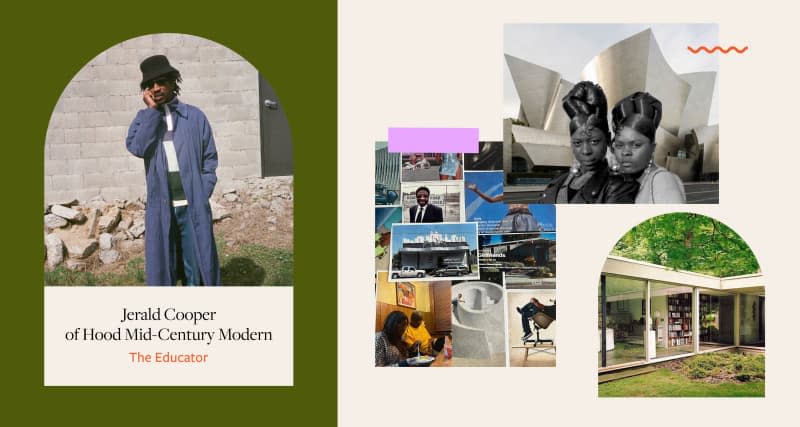
Jerald Cooper of Hood Century, The Archivist
Scrolling through Jerald “Coop” Cooper’s Instagram account, @hoodmidcenturymodern, is like going on a virtual tour through historic Black homes, buildings, and architecture. And that’s exactly what Cooper set out to do. The Cincinnati native and founder of creative studio Things We’ve Made has a professional background in branding, marketing, and event management. He’s committed to portraying Black residential modernism through his Instagram, which goes by “Hood Century” for short.
“I just felt like my buddies … couldn’t see how significant this architecture was,” he says regarding the page, which launched in 2019. “I’m showing Black neighborhoods, but I’m also showing people from Black neighborhoods what is outside of their neighborhood — showing them the city overall.”
Cooper, who recently won the Julius Shulman Excellence in Photography Award honoring his multimedia content, is proud that he’s created a unique design resource that has captivated an audience of over 94,000 followers. “There’s not a place online that you can go to get this type of knowledge around Black architects, around Black communities — I’m sure of that,” he shares.
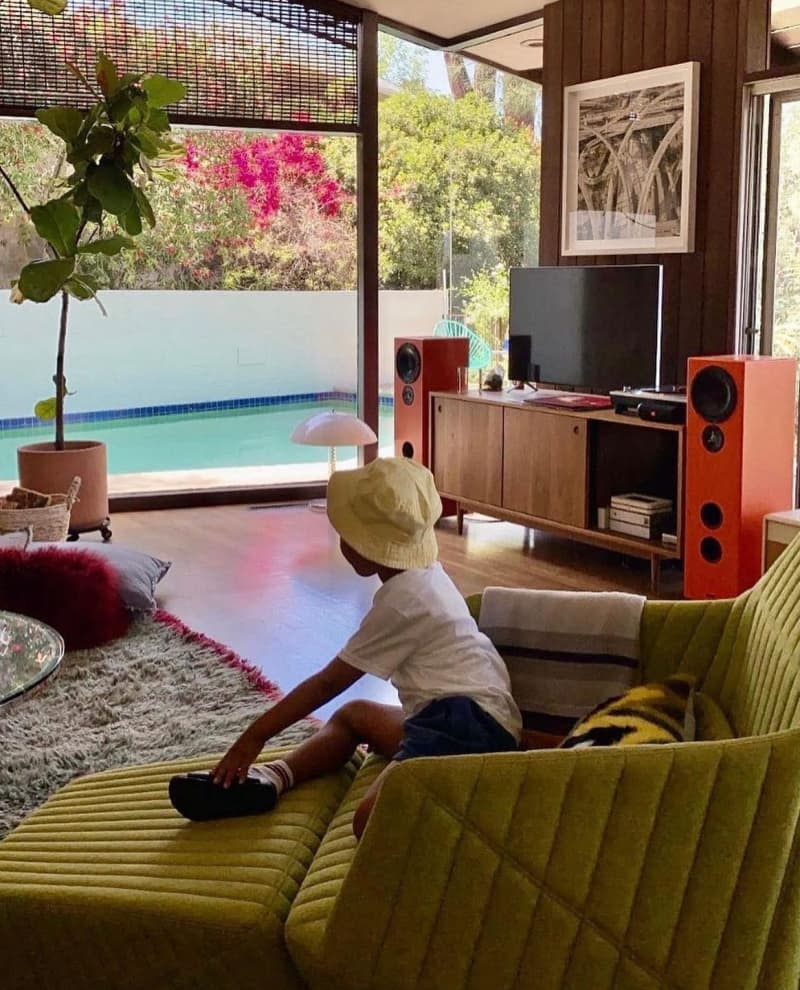
A self-proclaimed “Montessori kid,” Cooper is passionate about experiential learning. He’s released a now sold-out calendar, which features a collage of images from the Hood Century Instagram account, and plans on following that up with a black-and-white version soon as well. Cooper has also created flashcards designed to teach others about various predominant architectural styles.
“They’re coffee table-ready flashcards that people have gotten — thousands of people have gotten the house ones or the design ones, and now we’re going to release furniture ones here soon,” he says.
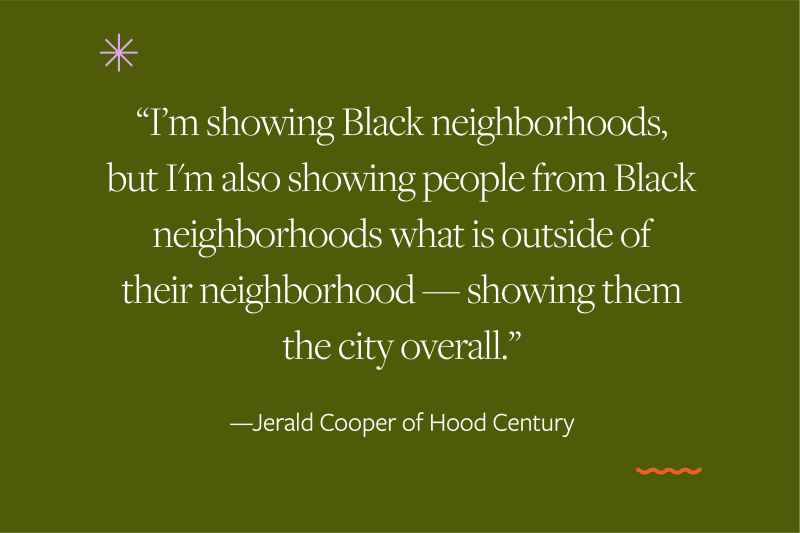
On March 2, he will host a semi-public tour of a modernist home in LA, commissioned in the mid-20th century by Dr. John Robinson, the first Black doctor ever hired at the Los Angeles County General Hospital. The name of the home’s architect, who was Black, remains a mystery, but is known to have studied under Frank Lloyd Wright.
And when it comes to his own home, Cooper has an appreciation for very low grounded furniture. “I travel with a yoga mat,” he says. “I love putting that mat out as if it’s some sort of magic carpet.”
Additional reporting for this piece was provided by Danielle Blundell, Amrita Thakkar, Blair Donovan, Sarah Everett, Cullen Ormond, and Sarah Lyon.

